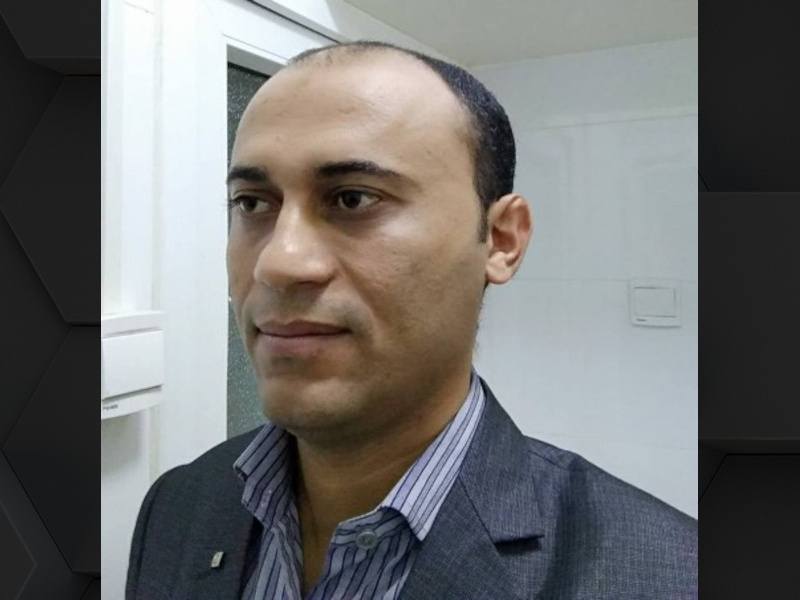
Athlone IT’s Dr Saeed Hamood Alsamhi is researching the feasibility of applying blockchain tech to robotic systems, which could be used in areas ranging from smart manufacturing to disaster monitoring.
Dr Saeed Hamood Alsamhi has been around the world on a research journey that brought him to the areas of blockchain and robotics. He started out studying engineering at Ibb University in Yemen, before doing his master’s and PhD at the Indian Institute of Technology. He then went to China for a postdoc position at Tsinghua University and become an assistant professor at the Shenzhen Institute of Advanced Technology.
Alsamhi is currently a Marie Sklodowska-Curie Actions fellow at Confirm, the Science Foundation Ireland research centre for smart manufacturing, and based at Athlone IT. His research interests include blockchain technology, multi-robot collaboration, digital twins, space technologies, the internet of things and green communication.
‘Multi-robot systems have wide application scenarios, especially in dangerous, unknown or hazardous environments’
– DR SAEED HAMOOD ALSAMHI
What inspired you to become a researcher?
Growing up, I loved asking how advanced technologies will improve our life quality and change our world to be smarter and greener. My research interest started during my master’s at the Indian Institute of Technology in Varanasi, India. It was my first time writing an article and when I attended an international conference, many participants asked questions and appreciated my proposed idea. This empowered me to do more research in advanced technologies and applications.
I continued my research with my PhD in space technology. Before I finished my PhD, I got a message from Prof Ou Ma at the School of Aerospace Engineering at Tsinghua University in Beijing, China. He invited me to work with him as a postdoc in the area of optimal and smart wireless network research and its applications to enhance robotics technologies. I checked the rank of Tsinghua University and found it was 17th in the world. This news made my day beautiful.
Can you tell us about the research you’re currently working on?
My research at the moment focuses on multi-robot collaboration to reach consensus during task performance in industry, or out of industry, with the help of blockchain technology. The project aims to develop a decentralised ledger platform with corresponding algorithms to enable heterogeneous robot collaborations with a tolerance of network partition and byzantine robots, or untrusted robots.
The project will investigate the constraints and characteristics of realistic robot collaboration applications to develop consensus algorithms for robotics-oriented blockchain systems. The chosen robotic applications will be implemented on top of the blockchain system, eg the best-of-n problem, which is an abstraction of the discrete consensus achievement problem.
In your opinion, why is your research important?
All research work is important, but I think the work that I am doing is important because we are trying to investigate realistic heterogeneous robot collaboration applications with high-security levels in a decentralised fashion using blockchain technology.
This could help manage heterogeneous multi-robots in smart factories in Ireland and the EU, achieving complex tasks effectively and efficiently and improving productivity in a way a single robot cannot do. Furthermore, multi-robot collaboration is required for disaster management to respond and mitigate potential adverse effects effectively.
Also, robots can be used for monitoring and combating Covid-19 and future pandemics. Autonomous robot collaboration can deliver services, goods and medicines anywhere – during Covid-19, robots delivered things to quarantine areas and performed tasks in hospitals without human intervention.
I have already published two articles in journals in this regard: Blockchain for decentralised multi‐drone to combat Covid‐19 and future pandemics: Framework and proposed solutions and Blockchain-empowered multi-robot collaboration to fight Covid-19 and future pandemics.
What commercial applications do you foresee for your research?
Developing decentralised robot collaboration could accelerate the adoption of multi-robot systems in industries. There are several commercial applications in smart manufacturing of multi-robot collaboration, eg object handling and transportation, monitoring natural resources, and delivery operations.
Commercial applications include disaster monitoring and management, emergency response and rescue, fault repair and diagnosis for outdoor industry operations. Furthermore, in healthcare, multi-robot collaboration can be used to avoid human interaction and combating and monitoring pandemics, such as Covid-19.
Multi-robot systems have wide application scenarios, especially in dangerous, unknown or hazardous environments, eg humanitarian demining, search and rescue, underwater exploration or surveillance.
What are some of the biggest challenges you face as a researcher in your field?
My current research is in a very early stage. The focus is to verify the feasibility of applying blockchain technology in robotics systems. The results are positive so far, however there are many challenges.
Most solutions require each robot to process transactions and store the world state [a database that holds current values of a set of ledger states] equally, just like the normal blockchain systems do. But these solutions are difficult to accommodate with capacity heterogeneities and network partitions.
What are some of the areas of research you’d like to see tackled in the years ahead?
With the advancement of communication technology such as Beyond 5G and 6G integrated with blockchain and federated learning, multi-robot collaboration in industry 4.0 could solve real-world challenges, improve process flexibility with productivity, improve decision making and action performance, and response in real time.
Don’t miss out on the knowledge you need to succeed. Sign up for the Daily Brief, Silicon Republic’s digest of need-to-know sci-tech news.
